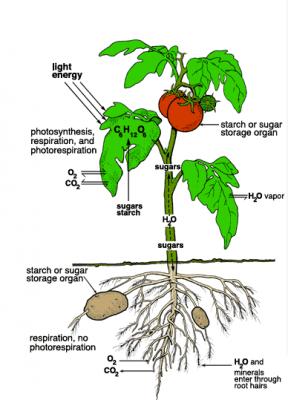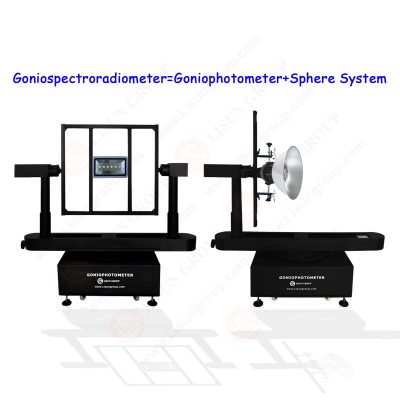It is one of the most important environmental factors required for plant growth. It is not only the energy source in the process of plant growth, but also an important signal source for plant form. The energy that plants depend on survival comes from the sun. The photosynthesis is an important biological approach to the plant capture light energy. It is one of the decisive factor for the continuation of life on the planet to synthesize organic matter and generate oxygen through photosynthesis.
As a new type of light source, LED has the characteristics of energy saving and environmental protection, long life, short response time, etc., and its advantages in the field of agricultural lighting are obvious. Compared with traditional light sources, LEDs can regulate spectrals and radiation intensity according to demand. Secondly, LED is a cold light source, which can irradiate plants at close range without burning. What’s more, LED light sources are small and are more suitable for multi -layer three -dimensional combination loading systems, which will help reduce the height of the height of the height of the cultivation layer and increase the density of unit space loading. LEDs have attracted much attention in the field of facilities agriculture, and have been widely used in the field of leafy vegetable plant factory and the production field of fruit and vegetables to achieve the purpose of improving production and improving quality.
This technology reports for plant growth LED artificial light environment. Analysis of the needs of the light and light of plant living in the plant, the plant growth indicators that evaluate the effect of artificial light, introduce the quality indicators and evaluation methods of vegetables, analyze the key elements of artificial light environmental light design, and propose the next standardization work. Suggestions to guide scientifically and reasonably evaluating plant growth LED artificial light environment.
Plants’ demand for light is mainly reflected in the three aspects: light radiation illness, light cycle, and spectral distribution, also known as the “light environment” of plant growth. The light environment through plant forms, intracellular metabolism, and gene expression of different levels and adjustment of plant growth. Understanding the impact of light on plant growth is the theoretical basis of agricultural production artificial light source applications. LISUN engineer design and manufacture LPCE-2 Integrating Sphere Spectroradiometer LED Testing System is for single LEDs and LED lighting products light measurement. LED’s quality should be tested by checking its photometric, colorimetric and electrical parameters. According to CIE 177, CIE84, CIE-13.3, IES LM-79-19, Optical-Engineering-49-3-033602, COMMISSION DELEGATED REGULATION (EU) 2019/2015, IESNA LM-63-2 and ANSI-C78.377, it recommends to using an array spectroradiometer with an integrating sphere to test SSL products.

The impact of light on plant growth is divided into two categories from the perspective of the required energy level. One is high -energy reaction, that is, optical fit, light provides energy for this reaction, and the other is low -energy reaction, that is, the formation of light form. In the process, the main signal effect is performed, which can be performed under lower light conditions. The nature of the signal is related to the wavelength of light. Plants can feel their growth and development through a series of light receptors in different bands. Different spectral distribution can adjust the formal aspirations of plants, regulate plant growth, change the plant aspect, and make it more adaptable to their own environment.
What parameter does LISUN’s LPCE-2 high precision Spectroradiometer Integrating Sphere System test?
• Colorimetric: Chromaticity coordinates, CCT, Color Ratio, Peak Wavelength, Half Bandwidth, Dominant Wavelength, Color Purity, CRI, CQS, TM-30 (Rf, Rg), Spectrum Test
• Photometric: Luminous Flux, Luminous Efficiency, Radiant Power, EEI, Energy Efficiency Class, Pupil Flux, Pupil Flux Efficiency, Pupil Factor, Cirtopic Flux, Plant Growth Lamp PAR and PPF
• Electrical: Voltage, Current, Power, Power Factor, Displacement Factor, Harmonic
• LED optical maintenance test: Flux VS time, CCT VS time, CRI VS time, Power VS time, Power Factor VS time, Current VS time and Flux Efficiency VS time.
Photosynthesis refers to the transformation of carbon dioxide and water into organic matter that stores carbon dioxide and water through photosyntomylite and other optical pigments, and releases the biochemical process of oxygen. Plant photosynthesis is a complex and complete biochemical system. The part of its occurrence is in the chloroplast of chloroplastment. The photosynthetic effect is divided into two stages: optical reaction and carbon reaction. Water decomposes into oxygen and restore -state hydrogen, and transforms light energy into chemical energy. The occurrence of its occurrence is a cystic membrane, and the carbon reaction refers to the restoration state hydrogen and chemistry generated by the leaf green response. The process of glucose is in the chloroplast matrix.

photosynthesis
The volume (or the amount of oxygen) of the optical system at the time of the unit area is fixed at the unit area of the unit, which (or the amount of oxygen), the optical rate, and the optical rate is an important indicator to determine the speed of the plant synthetic organic matter. Theoretically speaking, the more carbon dioxide absorbed by plants in photosynthesis, the lower the carbohydrates manufactured, and the higher the output of the plant dry substance.
Photosynthesis is not only affected by the light conditions in its growth environment, but also affected by other environmental factors. Light provides energy for photosynthesis. Other environmental factors such as temperature, moisture, humidity, and carbon dioxide concentration can also affect the photosynthetic effect of the plant.

Stomata open to allow carbon dioxide (CO2) to enter a leaf and water vapor to leave
Under the high temperature coercion, the intermediate product of chlorophyll biosynthesis 5-aminone pentaic acid and the original pyrine IX will be affected. The chlorophyll content in the leaves will be reduced. At the same time balance is broken, accelerating chlorophyll descending willow. In the case of low temperature, plants will turn off the pores in order to keep the temperature and reduce heat exchange, resulting in a reduction in the concentration of carbon dioxide in the cylinder.
Early coercion will first cause the stomach to close, reduce water dispersal, and then hinder carbon dioxide into the leaves and reduce the optical rate. Cell optical activity decreases. Excessive air temperature will administrate the disease, but too low air humidity will also reduce the guidelines of the plant air hole to affect the net photosynthetic rate of the plant.
In summary, the suitable light condition is the direct energy source of the photosynthetic effect of plants. At the same time, environmental factors such as temperature, humidity, and carbon dioxide concentration are the necessary conditions for ensuring high -efficiency operation of the optical system. LISUN LSG-1890BCCD/LSG-1800ACCD goniospectroradiometer is high precision automatic goniophotometric instrument for luminous intensity distribution measurement with facility for rotating the light source. The LSG-1890BCCD/LSG-1800ACCD can do the spatial CCT test and the intensity distribution test. It is for industrial laboratory photometric data measurement of luminaires such as LED luminaires, LED Plant Lighting, HID luminaires, fluorescent lamps and so on.

LSG-1890BCCD High Precision Goniospectroradiometer
Lisun Instruments Limited was found by LISUN GROUP in 2003. LISUN quality system has been strictly certified by ISO9001:2015. As a CIE Membership, LISUN products are designed based on CIE, IEC and other international or national standards. All products passed CE certificate and authenticated by the third party lab.
Our main products are Goniophotometer, Integrating Sphere, Spectroradiometer, Surge Generator, ESD Simulator Guns, EMI Receiver, EMC Test Equipment, Electrical Safety Tester, Environmental Chamber, Temperature Chamber, Climate Chamber, Thermal Chamber, Salt Spray Test, Dust Test Chamber, Waterproof Test, RoHS Test (EDXRF), Glow Wire Test and Needle Flame Test.
Please feel free to contact us if you need any support.
Tech Dep: Service@Lisungroup.com, Cell/WhatsApp:+8615317907381
Sales Dep: Sales@Lisungroup.com, Cell/WhatsApp:+8618117273997
Your email address will not be published. Required fields are marked *